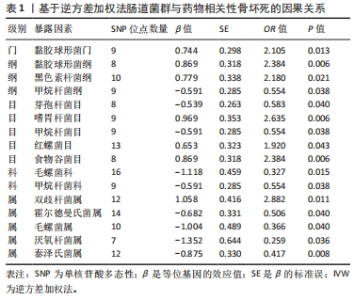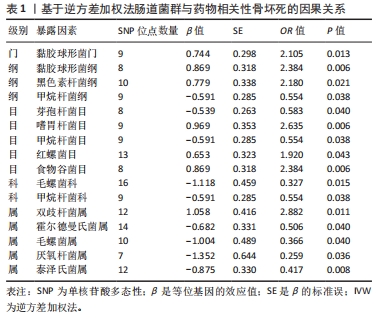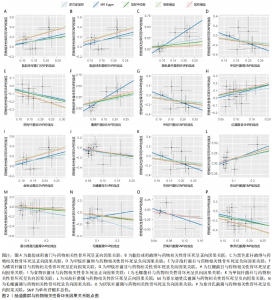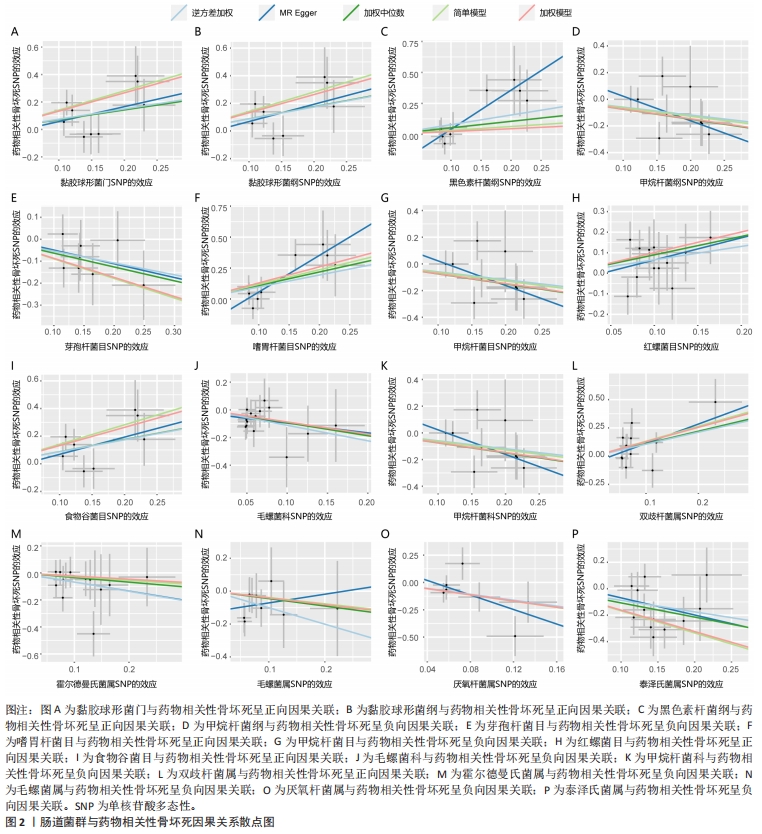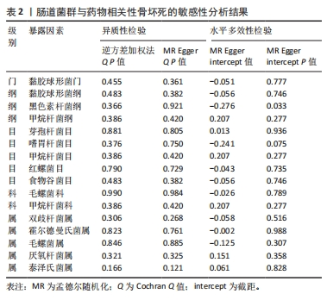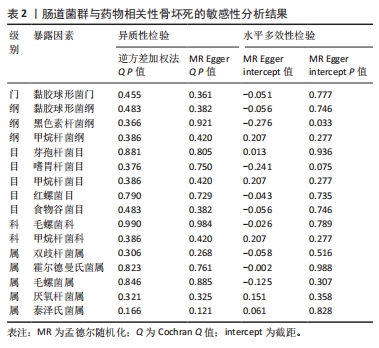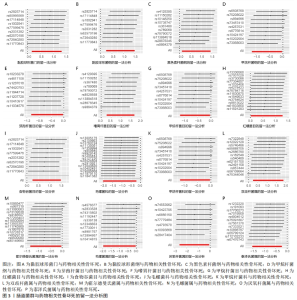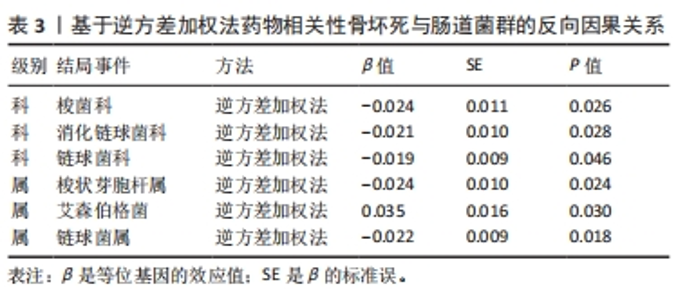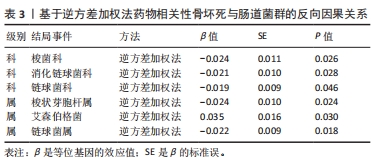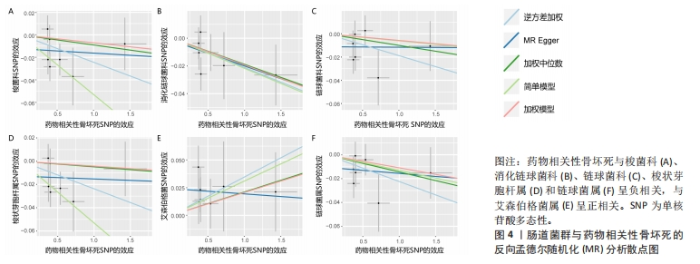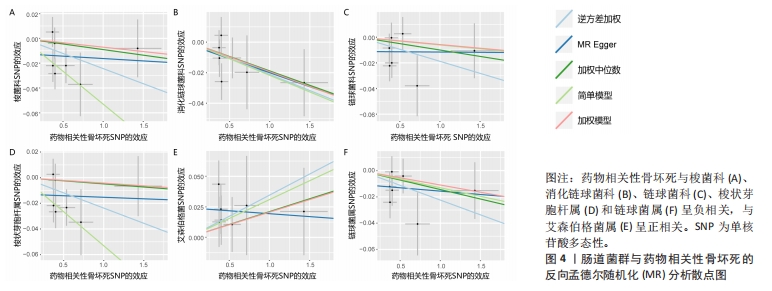[1] 蔡晨晨,刘济远,唐休发,等.药物相关性颌骨坏死治疗的研究进展[J].中国医学前沿杂志(电子版),2023,15(5):37-45.
[2] PAVELKA K. Osteonecrosis. Baillieres Best Pract Res Clin Rheumatol. 2000; 14(2):399-414.
[3] VAN DEN WYNGAERT T, HUIZING MT, VERMORKEN JB. Osteonecrosis of the jaw related to the use of bisphosphonates. Curr Opin Oncol. 2007;19(4): 315-322.
[4] MOON DK. Epidemiology, cause, and anatomy of osteonecrosis of the foot and ankle. Foot Ankle Clin. 2019;24(1):1-16.
[5] MCLEOD JM, NG A, KRUSE DL, et al. Nontraumatic osteonecrosis of the distal tibia: a case presentation and review of the literature. J Foot Ankle Surg. 2017;56(1):158-166.
[6] NUNES GA, DE SOUZA MLAT, BRAGA BM, et al. Osteonecrosis of the intermediate cuneiform: a case report. Rev Bras Ortop (Sao Paulo). 2021; 56(3):394-398.
[7] MCCADDEN L, LEONARD CG, PRIMROSE WJ. Bisphosphonate-induced osteonecrosis of the ear canal: our experience and a review of the literature. J Laryngol Otol. 2018;132(4):372-374.
[8] IMATAKI O, UEMURA M. Multifocal osteonecrosis after stem cell transplantation. Int J Hematol. 2022;116(2):158-159.
[9] TRAN NT, LEE KB. Multifocal osteonecrosis in the foot and ankle after extracorporeal membrane oxygenation: a case report. J Am Podiatr Med Assoc. 2022. doi: 10.7547/21-060.
[10] LIU LH, ZHANG QY, SUN W, et al. Corticosteroid-induced osteonecrosis of the femoral head: detection, diagnosis, and treatment in earlier stages. Chin Med J (Engl). 2017;130(21):2601-2607.
[11] KIM R, KIM SW, KIM H, et al. The impact of sex steroids on osteonecrosis of the jaw. Osteoporos Sarcopenia. 2022;8(2):58-67.
[12] CHANG C, GREENSPAN A, GERSHWIN ME. The pathogenesis, diagnosis and clinical manifestations of steroid-ind uced osteonecrosis. J Autoimmun. 2020;110:102460.
[13] SONG Y, DU Z, CHEN B, et al. Association of SREBP2 gene polymorphisms with the risk of osteonecrosis of the femoral head relates to gene expression and lipid metabolism disorders. Molecular medicine reports. 2017;16(5):7145-7153.
[14] HE L, SUN X, LIU Z, et al. Pathogenesis and multidisciplinary management of medication-related osteonecrosis of the jaw. Int J Oral Sci. 2020;12(1):30.
[15] 潘剑,刘济远.药物相关性颌骨坏死的发病机制及其防治[J].华西口腔医学杂志,2021,39(3):245-254.
[16] CHEN Y, ZHOU J, WANG L. Role and mechanism of gut microbiota in human disease. Front Cell Infect Microbiol. 2021;11:625913.
[17] ALSEGIANI AS, SHAH ZA. The role of cofilin in age-related neuroinflammation. Neural Regen Res. 2020;15(8):1451-1459.
[18] MAIER L, PRUTEANU M, KUHN M, et al. Extensive impact of non-antibiotic drugs on human gut bacteria. Nature. 2018;555(7698):623-628.
[19] SHI Q, DAI L, ZHAO Q, et al. A review on the effect of gut microbiota on metabolic diseases. Arch Microbiol. 2022;204(3):192.
[20] CHEN CY, RAO SS, YUE T, et al. Glucocorticoid-induced loss of beneficial gut bacterial extracellular vesicles is associated with the pathogenesis of osteonecrosis. Sci Adv. 2022;8(15):eabg8335.
[21] LI P, WANG H, GUO L, et al. Association between gut microbiota and preeclampsia-eclampsia: a two-s ample Mendelian randomization study. BMC Med. 2022;20(1):443.
[22] LIU B, YE D, YANG H, et al. Assessing the relationship between gut microbiota and irritable bowel syndrome: a two-sample Mendelian randomization analysis. BMC Gastroenterol. 2023;23(1):150.
[23] SANNA S, VAN ZUYDAM NR, MAHAJAN A, et al. Causal relationships among the gut microbiome, short-chain fatty acids and metabolic diseases. Nat Genet. 2019;51(4):600-605.
[24] XU Q, NI JJ, HAN BX, et al. Causal relationship between gut microbiota and autoimmune diseases: a two-sample mendelian randomization study. Front Immunol. 2022;12:746998.
[25] INAMO J. Non-causal association of gut microbiome on the risk of rheumatoid arthritis: a Mendelian randomization study. Ann Rheum Dis. 2021;80(7):e103.
[26] LESPASIO MJ, SODHI N, MONT MA. Osteonecrosis of the hip: a primer. Perm J. 2019;23:18-100.
[27] TEIMOURI M, MOTIFIFARD M, HATAMI S. Etiology of femoral head avascular necrosis in patients: a cross-sectional study. Adv Biomed Res. 2022;11:115.
[28] GUERADO E, CASO E. The physiopathology of avascular necrosis of the femoral head: an update. Injury. 2016;47 Suppl 6:S16-S26.
[29] WANG Y, LI D, CHEN H, et al. Accumulation of fat not responsible for femoral head necrosis, revealed by single-cell RNA sequencing: a preliminary study. Biomolecules. 2023;13(1):171.
[30] WEINSTEIN RS. Glucocorticoid-induced osteonecrosis. Endocrine. 2012; 41(2):183-190.
[31] KIM DW, JUNG YS, PARK HS, et al. Osteonecrosis of the jaw related to everolimus: a case report. Br J Oral Maxillofac Surg. 2013;51(8):e302-304.
[32] TORIUMI S, KOBAYASHI A, UESAWA Y. Comprehensive study of the risk factors for medication-related osteonecrosis of the jaw based on the japanese adverse drug event report data base. Pharmaceuticals (Basel, Switzerland). 2020;13(12):467.
[33] BETH-TASDOGAN NH, MAYER B, HUSSEIN H, et al. Interventions for managing medication-related osteonecrosis of the jaw. Cochrane Database Syst Rev. 2017;10(10):CD012432.
[34] LOMBARD T, NEIRINCKX V, ROGISTER B, et al. Medication-related osteonecrosis of the jaw: new insights into molecular mechanisms and cellular therapeutic approaches. Stem Cells Int. 2016;2016:8768162.
[35] HAMADEH IS, NGWA BA, GONG Y. Drug induced osteonecrosis of the jaw. Cancer Treat Rev. 2015;41(5):455-464.
[36] MARX RE. Pamidronate (Aredia) and zoledronate (Zometa) induced avascular necros is of the jaws: a growing epidemic. J Oral Maxillofac Surg. 2003;61(9):1115-1117.
[37] HAMDY RC. Osteonecrosis of the Jaw. J Clin Densitom. 2017;20(1):1-2.
[38] VILLA CR, WARD WE, COMELLI EM. Gut microbiota-bone axis. Crit Rev Food Sci Nutr. 2017;57(8):1664-1672.
[39] XU J, LI M, GAO Y, et al. Using Mendelian randomization as the cornerstone for causal inference in epidemiology. Environ Sci Pollut Res Int. 2022;29(4): 5827-5839.
[40] 武瑞骐,张璇,周毅,等.两样本孟德尔随机化分析他汀类药物与骨关节炎风险的关系[J].中国组织工程研究,2024,28(26):4106-4112.
[41] ZHANG J, LU Y, WANG Y, et al. The impact of the intestinal microbiome on bone health. Intractable Rare Dis Res. 2018;7(3):148-155.
[42] 黄俊俊,史晓林,邓祖跃.强骨饮联合益生菌对大鼠骨质疏松性骨折的愈合作用[J].中国现代应用药学,2019,36(7):791-795.
[43] SJÖGREN K, ENGDAHL C, HENNING P, et al. The gut microbiota regulates bone mass in mice. J Bone Miner Res. 2012;27(6):1357-1367.
[44] ZHANG YW, CAO MM, LI YJ, et al. Fecal microbiota transplantation ameliorates bone loss in mice with ovariectomy-induced osteoporosis via modulating gut microbiota and metabolic function. J Orthop Translat. 2022;37:46-60.
[45] COLLINS KH, PAUL HA, REIMER RA, et al. Relationship between inflammation, the gut microbiota, and metabolic osteoarthritis development: studies in a rat model. Osteoarthritis Cartilage. 2015;23(11): 1989-1998.
[46] TEJESVI MV, ARVONEN M, KANGAS SM, et al. Faecal microbiome in new-onset juvenile idiopathic arthritis. Eur J Clin Microbiol Infect Dis. 2016; 35(3):363-370.
|
